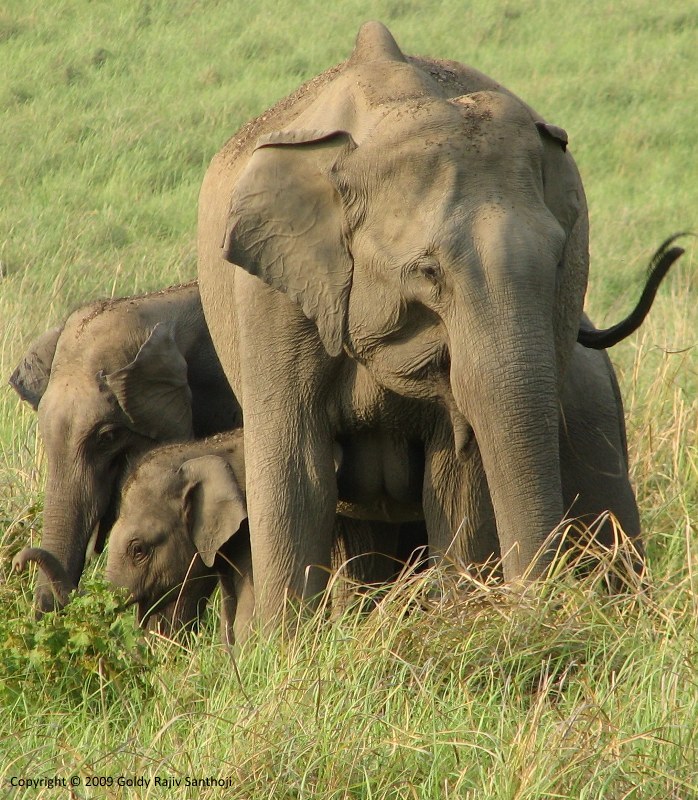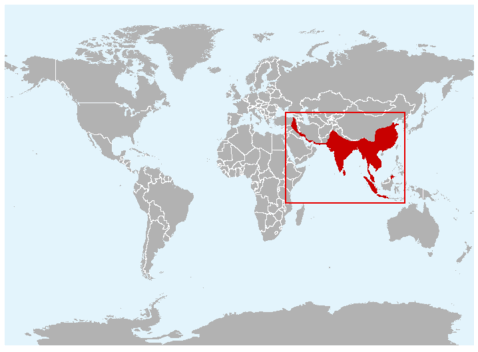
Photo credit: Goldy Rajiv Santhoji
The Asian Elephant, Elephas maximus, is listed as ‘ENDANGERED’ on the IUCN Red List of Threatened Species™. It is found in isolated populations in 13 tropical Asian countries. The Asian Elephant is smaller than its African savannah relative; the ears are smaller and the back is more rounded.
The numbers of Asian Elephants have been decimated by habitat loss, degradation, and fragmentation, driven by an expanding human population. This causes elephants to become increasingly isolated, often coming into conflict with local farmers. Crops are damaged and lives lost; up to 300 people a year are killed by elephants in India. Poaching for ivory is also a threat and because only males have tusks, populations can become extremely skewed towards females, thus affecting breeding rates.
The most important conservation priorities for the Asian Elephant are: conservation of their habitat and maintaining habitat connectivity by securing corridors; management of human–elephant conflicts; improved legislation and law enforcement with enhanced field patrolling;and regulating/curbing trade in ivory and other elephant products.
Geographic Range of the Asian Elephant
Credit: IUCN Red List of Threatened Species™
To learn more about Asian Elephants, click here. Or visit the IUCN Red List of Threatened Species by clicking their logo below.
To learn more about the Bush Warriors “Species of the Day” feature, please click here and read up on our initiative to raise awareness about the loss of earth’s biodiversity.
TAKE ACTION FOR ELEPHANTS!
Tell the world what’s happening to the world’s largest land mammal, by participating in our ‘Walking on Wildlife‘ campaign! CLICK HERE TO LEARN HOW!
Walking on Wildlife in Semaphore, South Australia. Done by Jude Price and Kaye Brown. Watch these Bush Warriors in action in the video below!
[youtube=http://www.youtube.com/watch?v=TfqACinqSUk&feature=player_embedded]
Learn how to do your own ‘Walking on Wildlife’ HERE!
![]()






